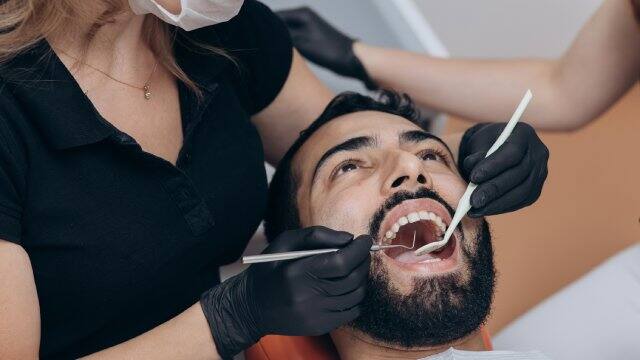Cosmetic dentistry is a method of professional oral care that focuses on improving the appearance of your mouth, teeth and smile. And although cosmetic dentistry procedures are usually elective, rather than essential, some cases of treatment also provide restorative benefits.
The most common procedures used in cosmetic dentistry are fairly simple, whereas others are more complex and require specialized care.
Inlays and Onlays
These are also known as indirect fillings, which are made by a dental laboratory, and they are used when a tooth has mild to moderate decay or there is not enough tooth structure to support a filling. Provided there is no damage to the tooth cusps, according to Choice One Dental Care, the inlay is placed directly onto the tooth surface. When the cusp or a greater portion of the tooth is damaged, however, an onlay is used instead to cover the tooth's entire surface.
Inlays and onlays are made in a dental laboratory from composite resin material and attached to the teeth with adhesive dental cement. They provide support to strengthen teeth, restore their shape and avoid any further decay or deterioration.
Composite Bonding
Composite bonding refers to the repair of decayed, damaged or discolored teeth using material that resembles the color of tooth enamel. Your dentist drills out the tooth decay and applies the composite onto the tooth's surface, then "sculpts" it into the right shape before curing it with a high-intensity light. Also referred to as simply "bonding," per the Consumer Guide to Dentistry, this effectively covers the damage to the tooth and gives the appearance of a healthy tooth in its place. Bonding is one of the least expensive cosmetic dentistry procedures available to patients with tooth decay, chipped or cracked teeth and worn-down edges.
Dental Veneers
Typically manufactured from medical-grade ceramic, dental veneers are made individually for each patient to resemble one's natural teeth, according to Bruce Wilderman, DDS. They look exceptionally realistic and can resolve numerous cosmetic problems, ranging from crooked teeth, to cracked or damaged enamel to noticeable gaps between two teeth. The dentist applies the veneer to the front of each tooth using a dental adhesive.
Teeth Whitening
One of the most basic cosmetic dentistry procedures, teeth whitening or teeth bleaching can be performed at your dentist's office. Whitening should occur after plaque, tartar and other debris are cleaned from the surface of each tooth, restoring their natural appearance. Teeth can also be bleached to achieve an even lighter shade than this original color, according to the American Dental Association (ADA) Mouth Healthy site.
Over the years, teeth become stained and worn from food, drinks, medication and personal habits such as smoking. Whitening coats the teeth and this procedure can be done in the dental office or at home. Additionally, patients can use toothpastes to achieve the same effect in a one to two week period.
Implants
Dental implants are used to replace teeth after tooth loss. The dentist inserts a small titanium screw into the jaw at the site of the missing tooth, which serves as the support for a crown. These implants are almost indistinguishable from the surrounding natural teeth, and once the bone and supporting tissue fuse to the implant, they are permanently secured into place. Patients need to practice diligent oral hygiene during the implant placement period to clean plaque and food debris from the area.
If you're considering cosmetic dentistry procedures, it's vital to find a cosmetic dentist who specifically offers the option you're interested in. Talk with family and friends to find out if they can refer to you a dental professional, or check with the GCR (Global Clinic Rating) for listings of dentists in your area.





